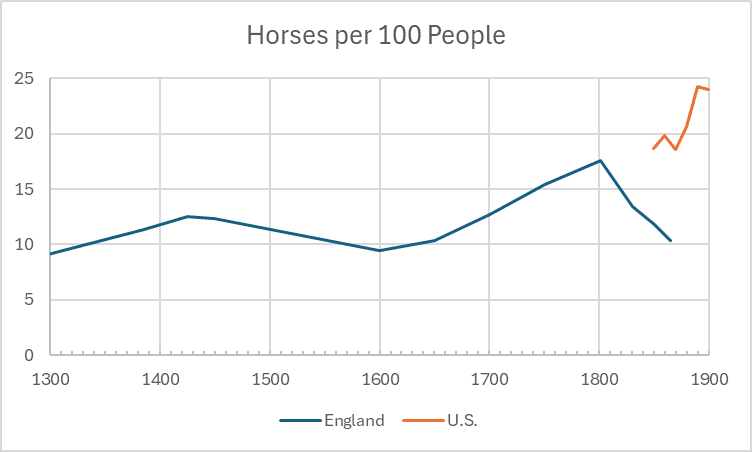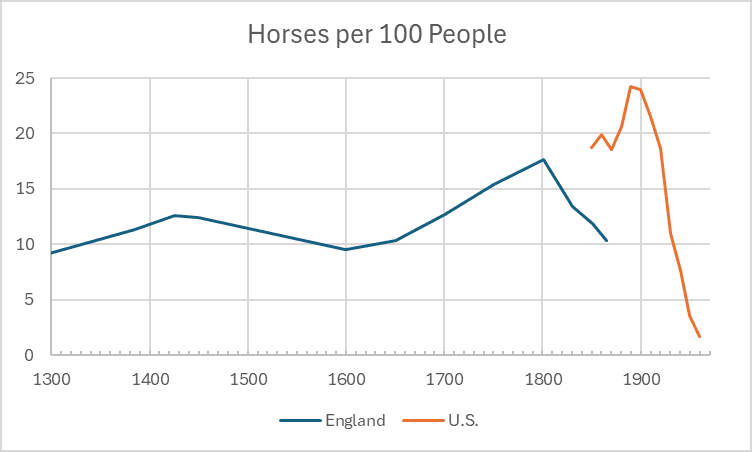
The economist Wassily Leontief, writing in 1966, used the then-recent decline of horses to make vivid what he foresaw as the coming impact of technological advances on workers. In 1910, the horse had remained indispensable for farming, transportation, and even war, despite decades of the radical technological progress of the Second Industrial Revolution. By 1960, though, horses were obsolete for all of the above, the US horse population having fallen by 85% as a result.
In 1982, when unemployment topped 10%, continuing a general upward trend since 1966, Leontief's warning of a similar fate for humans seemed on track. But the upward trend ended there, with unemployment generally remaining far below its 1982 high ever since.[1] Median real wages, moreover, have not fallen as Leontief feared.[2]
Nonetheless, Leontief's analogy between human and horse employment remains worth pondering. Examples from earlier horse history can actually help illustrate the reasons technological [...]
---
Outline:
(01:31) Reliance on horses persisted despite technological advances...
(02:12) Demand expands with efficiency
(03:17) New, previously unimagined jobs
(05:10) ...until a general substitute for horses arrived
(07:06) What about comparative advantage?
(08:52) What about the lower cost of goods?
The original text contained 15 footnotes which were omitted from this narration.
---
First published:
May 23rd, 2025
Source:
https://www.lesswrong.com/posts/nZbxQgLWhKCASApEe/learning-more-from-horse-employment-history
---
Narrated by TYPE III AUDIO.
---
Images from the article:


Apple Podcasts and Spotify do not show images in the episode description. Try Pocket Casts, or another podcast app.
Senaste avsnitt
En liten tjänst av I'm With Friends. Finns även på engelska.